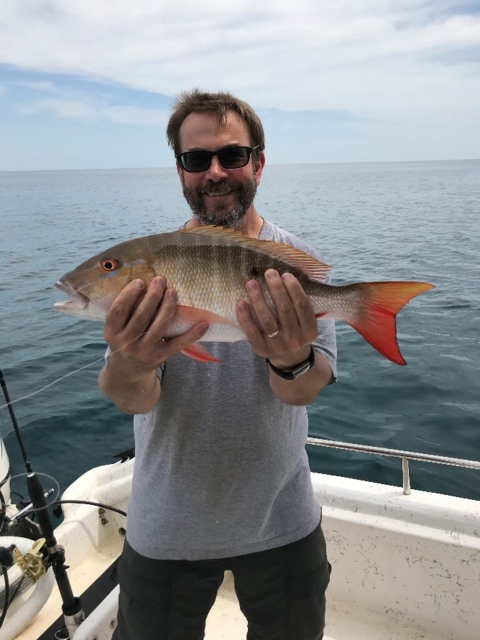Scott Covington grew up outside Little Rock, Arkansas and after graduating high school, he left the area and moved around a lot. Finding himself in Nebraska and Wyoming, Scott really began appreciating and grew fond of outdoor activities. He spent a lot of time with his father-in-law, who was a farmer and cattle rancher. They covered a lot of ground hunting and fishing over the years.
After saving enough money while working for the Union Pacific Railroad as a brakeman or switchman, Scott put himself through college. He went to the University of Arkansas and earned a bachelor’s degree in biology with a focus on aquatic biology. Scott then won an assistantship at the University of Wyoming to study the relationship between trout habitat, water manipulations, and population dynamics. While at the University of Wyoming, he received a master’s degree in zoology and physiology.
Scott worked for both Vermont Fish and Wildlife Department and Wyoming Game and Fish Department prior to joining USFWS as an energy biologist with the Wyoming Ecological Services Field office. A few years later, he landed in the USFWS Headquarters' Office as the national energy coordinator. From there he has served as senior ecologist in Headquarters for the National Wildlife Refuge System. He spends a lot of his time in the field, which helps him understand issues on the ground. From the field, he provides support, information, direct research or pilots new strategies. Being out there enables Scott to build a coalition of like-minded staff. Scott loves the power of collaboration! He enjoys mixing it up with colleagues to develop solutions on difficult problems, and having a national perspective allows him to understand how an individual unit, complex, and region can work together to form a system.
While he wears many hats, his primary responsibility is serving as the Refuge System lead for climate change. Scott is responsible for developing policies and procedures, conducting vulnerability assessments and adaptation planning, and serving as a “translator” to bring climate science to staff. He stays busy incorporating climate change into the system's activities, and developing innovative methods to address climate impacts through on-the-ground actions.
One of his passions is understanding the relationship between climate change and potential adaptation strategies — how to better manage resources for now and into the future. For the past few years, he’s been focused on developing the Resist-Accept-Direct strategy, which he believes, “is very simplistic, but helpful in making long-term management decisions.”
Protecting carbon resources and increasing carbon sequestration capacity is relevant when it comes to managing public lands to ensure healthy and resilient habitats. Did you know that older refuges store more carbon per unit area than younger refuges? “In addition to the age factor, carbon resources are variable by regions and habitat types protected in the refuges. Mean carbon stock and the rate of sequestration are higher within refuges than outside refuges.” In one of Scott’s recent publications titled, Conservation of carbon resources and values on public lands: A case study from the National Wildlife Refuge System, it explores ways to improve techniques to maximize carbon resources in refuges, while continuing to meet the core purpose and need of the National Wildlife Refuge System.
Another recent publication, “Incorporating climate uncertainty into conservation planning for wildlife manager,” speaks to the accelerating biodiversity crisis in combination with an unpredictable climate and how to better plan for unforeseen obstacles. “A thorough understanding of how climate change affects biodiversity is integral to effective conservation planning.” The authors’ recommendations include “building staff capacity by improving coordination and awareness around climate science, fund or conduct additional research, continue to develop and work with partners collaborative conservation frameworks that incorporate climate science, expand training to increase coverage of decision-making under climate uncertainty.”
Scott shares, “as the climate continues to change, we must adapt to those changes. Wildlife depends on habitat, and we have to understand those changes that are occurring to habitat to improve our responses and map out a systematic approach. This will ensure we can hang on to what we have for as long as we can. As our understanding improves, we’ll be better poised to make informed decisions.”
Visit the USFWS’s page on climate change to learn more about how the USFWS is adapting to a changing climate. Read about the impacts climate change has had across the National Wildlife Refuge System. See his full list of publications discoverable via USFWS Library. This #FWSscholar blog series is brought to you by the USFWS Library, #WeAreUSFWS, #SomosUSFWS.




